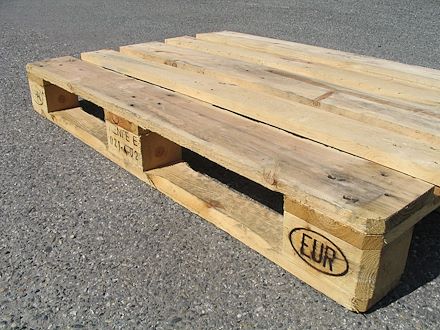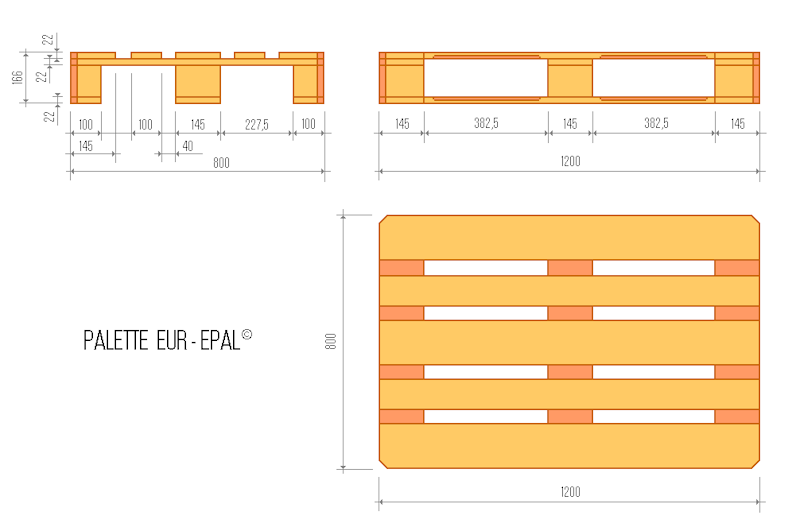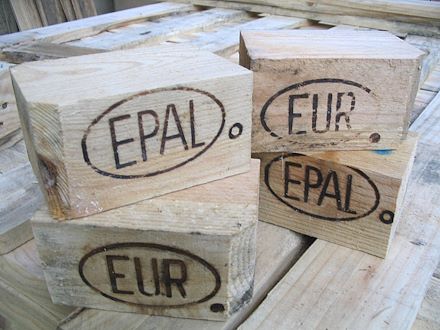
The Europe or EUR EPAL pallet, formerly known as the Euro pallet, is a four-way wooden pallet that meets the requirements of UIC leaflets 435-2-0 (for manufacture) and 435-4-OR (for repair) and the EPAL "Technical Regulations". It also meets AQF 335 Railway Quality Assurance standards. This quality charter has enabled the Europe pallet to become an essential part of the goods handling and transport logistics chain.
EUR trademark
The EUR trademark is owned by the company operating the Austrian railway network ÖBB (Österreichische Bundesbahn). This trade mark has been the subject of an Austrian registration (N°85513 of 20/01/1977 and 11/05/1977) and an international registration (N°430-337 of 11/05/1977) with the WIPO. Under the terms of an agreement dated 12 September 1995 and 1 March 1996, the ÖBB granted SNCF the exclusive right to use the EUR trademark in France.

EPAL trademark
The EPAL trademark is the property of the association of the same name based in Hagen, Germany. It has been registered in Germany (No. 2054520 on 17/10/1992 and 18/01/1994), internationally (No. 617158 on 16/03/1994) at the WIPO and within the EU (No. 000472415 on 5/02/1997) at the OHIM. This pallet is designed to be rotated several times, thereby helping to reduce industrial packaging waste. It can be repaired and recycled at the end of its life.

In order to be easily identifiable but also to avoid counterfeiting, EUR/EPAL pallets have various markings on the intermediate elements (dice): EUR logo, EPAL logo for pallets manufactured after 1995, railway company logo (SNCF for France, DB for Germany, etc.) and possibly the manufacturer's logo. The latter, like EUR/EPAL pallet repairers, must be approved to manufacture or repair pallets and must have the right to use the protected trademarks. Similarly, a reconditioned EPAL pallet must be repaired using EPAL-stamped nails and must be easily identifiable by a staple, plate or nail fitted by the repairer.
With dimensions of 1200x800mm and a weight of around 25 kg, a EUR EPAL pallet can support a dynamic load of between 1000 and 1400 kg. The wood species used in their manufacture are mainly pine and poplar. Three million new EUR EPAL pallets were manufactured in 1997, and over 36 million in 2002 (source EPAL). The food industry is the biggest consumer of this type of pallet.